
views
Spotting the Signs

Pay attention to your teen’s mood and how they handle their emotions. Teens who cut are often depressed, anxious, or under a lot of stress. If your child’s mood or self-esteem has taken a turn for the worse, it doesn’t necessarily mean they are cutting, but it does mean you should be on the lookout for other signs of a problem. For example, if your child seems more withdrawn than usual, doesn’t seem to enjoy doing many things, or says they feel overwhelmed, they might be at risk for cutting. They may also appear depressed, sad, or blue and seem to lack energy to do anything. Consider whether or not your teen is angry and how they deal with their anger. Teens who hurt themselves sometimes do so as a way to deal with negative moods, including anger. Ask yourself what coping skills your teen uses when he or she is feeling distressed. For example, does your teen often go off alone and then come back seeming like they are fine? This may indicate that they have done something to cope, and it is important to make sure that they are doing something healthy.

Take notice of cuts and scratches. Everyone gets cuts and scrapes now and then, but if your teen seems to get hurt frequently, or if their injuries never seem to heal, they may be cutting themselves. They may also make a lot of excuses about where the marks came from. For instance, they might say something like, “My arms got scratched hiking in the woods” or “My friend’s cat scratched me.” Marks that look intentional, such as rows of parallel scratches, are typically a sure sign that your teen is cutting. Keep an eye out for bloody tissues or bandages in the trash as well.
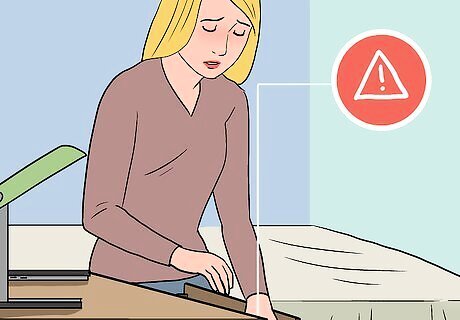
Be on the alert for cutting tools. All kinds of things can be used to cut or scrape the skin – knives, razor blades, safety pins, paper clips, and even fingernails. If you notice that your child has an assortment of sharp objects in their room or backpack, it may be a sign that they’re cutting.

Notice whether your teen covers up more than usual. If your teen wears long pants and long sleeves in hot weather, they may be trying to hide cuts on their arms and legs. Other warning signs may include wearing bracelets that hide their wrists and refusing to change in a locker room.
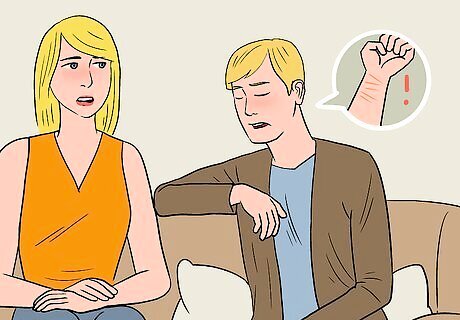
Pay attention to any talk about self-injury. If your teen mentions cutting or self-harm, even as a joke, you should take it seriously. Talking about self-injury is a giveaway that the behavior is on your child’s mind for some reason. If your teen mentions self-harm, use it as an opportunity to start a conversation. Ask them whether they know anyone who self-injures and how they feel about it. This can give you a better idea of whether your teen is at risk for cutting.
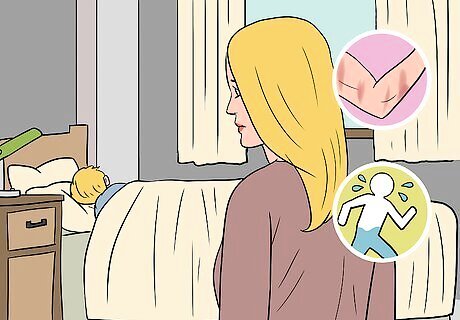
Watch for other means of self-injury. Cutting is not the only form of self-injury that teens may use to hurt themselves. Teens may also use things like burning, bruising, or excessive exercise as a substitute for cutting. Be on the lookout for evidence of these types of self-injuring. For example, you might notice a burn mark on your teen’s arm, bruises on their legs, or that they are dehydrated and sore from over-exercising.
Talking to Your Teen
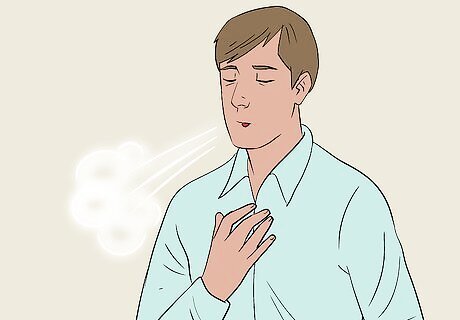
Take a deep breath. If you think your teen is cutting, don’t freak out – at least, not in front of them. Take the time to regain your composure and let your feelings settle a little. Wait to talk to your child until you’ve calmed down. If you panic or yell at them, you’ll only make them feel ashamed or defensive, and that won’t be productive for either of you. It’s normal to feel a lot of negative emotions if you find out your child is cutting. You might feel scared, angry, confused, and sad all at once. These feelings are valid, but it’s not a good idea to take them out on your child. Remember, your teen isn’t cutting to upset you. They’re dealing with their own painful feelings or an inability to deal with their feelings. A calm, compassionate approach will work best with them.
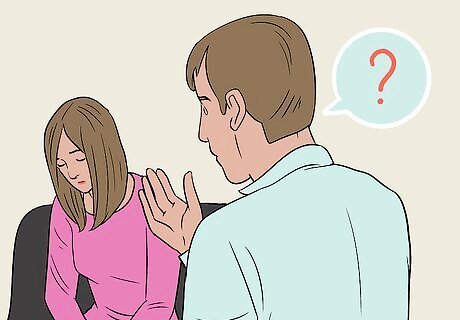
Ask your teen if they’re cutting. Be straightforward. Say something like, “I’ve noticed that you have a lot of scratches on your arms these days. Are you cutting yourself?” Use a warm, gentle tone. If you sound accusatory, your teen might get angry or defensive. If your child admits that they’re cutting, ask follow-up questions to understand them better, like, “What makes you want to cut?” “What does it do for you?” and “How do you feel after you cut yourself?”
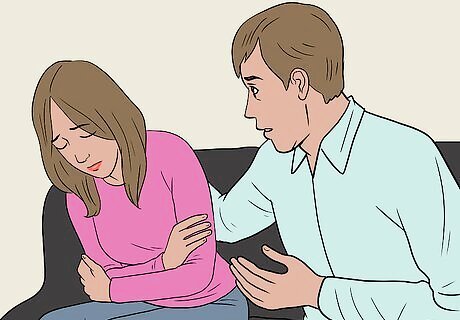
Empathize with your teen. Make your child feels understood and loved, not judged. Listen to them and do your best to see where they’re coming from. Say something like, “I know you’ve got to be struggling a lot right now.”

Don’t make it about you. Your child’s cutting affects you deeply, of course, but making them feel worse won’t solve anything. Don’t say anything like, “I’ve been a terrible parent to you” or “How could you do this to me?” It’s not your fault that your teen is cutting. However, if you take the right steps, you can be part of the reason why they stop.
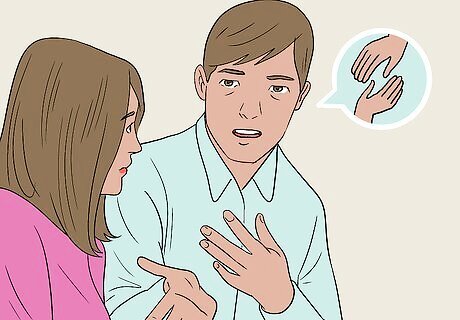
Tell your teen you want to help them. Make sure your teen knows they have your love and support, no matter what. Emphasize that they don’t need to feel guilty or embarrassed about asking for help. Say something like, “I want to help you feel better however I can. If you ever need anything, or if you just want to talk, you can come to me.”
Helping Your Teen

Understand that you can’t force your teen to stop cutting. It’s hard to accept, but the decision to cut or not to cut is your child’s alone. Someone who wants to self-injure will always find a way to do so. Instead of trying to control your child, focus on supporting them and helping them get to a better state of mind. You may still want to lock up razors and knives, but be aware that you probably can’t get rid of every sharp object in the house.

Take your teen to a doctor. Make an appointment with a medical professional, like your teen’s pediatrician. They can evaluate your teen’s health and refer you to a therapist or psychologist for treatment.
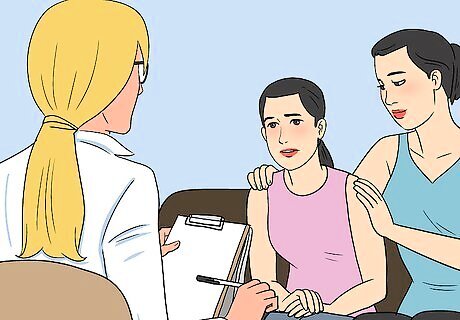
Take your teen to see a therapist. Tell your child how talking with a therapist will help them learn how to handle their emotions in a healthier way. Take a positive, casual tone. Don’t talk about therapy like a kind of punishment or make your child feel guilty for needing it. If you’ve ever been to see a therapist yourself, tell your teen about it. This will help normalize the idea for them. You may also want to go with your teen to therapy, but make sure that you allow your teen to lead the sessions.
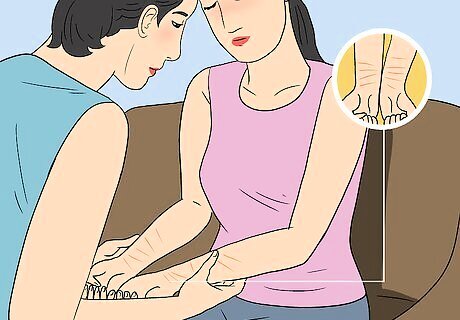
Ask your teen to show you their cuts. Getting daily status reports from your teen by asking them to show you their cuts will allow you to make sure the cuts are not becoming infected. It may also decrease your teen’s urge to cut because they know that they will have to show them to someone on a regular basis.

Help your teen manage the problems that made them want to cut. Sit down with your child and brainstorm some ways they can deal with their negative feelings instead of cutting. Offer to provide practical or emotional support however you can. For instance, offer to take a walk with your teen when they need to talk about a problem, or cut back on their household chores if they’re overwhelmed with schoolwork.

Learn about non-suicidal self-injury. Non-suicidal self-injury is more common in adolescents than many people might think. In fact, about one third to one half of teenagers admit to hurting themselves in some way. There are several reasons why teens may self-harm including as a result of: Emotional distress. Cutting may be used as a way to relieve pain, combat emotional numbness or “feel something,” distract from emotional pain, or even to distract from suicidal thoughts. A co-occurring disorder. People who have the highest risk for self-injury are those who have an eating disorder, developmental disorder, or a history of trauma. Personality traits. Teens who cut tend to be impulsive, have high emotional reactivity, high emotional intensity, and utilize avoidant behavior. Environmental factors. Teens who self-injure are also more likely to be bullied and have friends who cut.




















Comments
0 comment